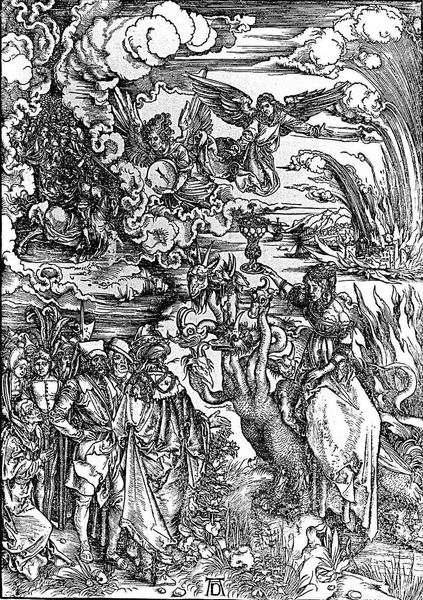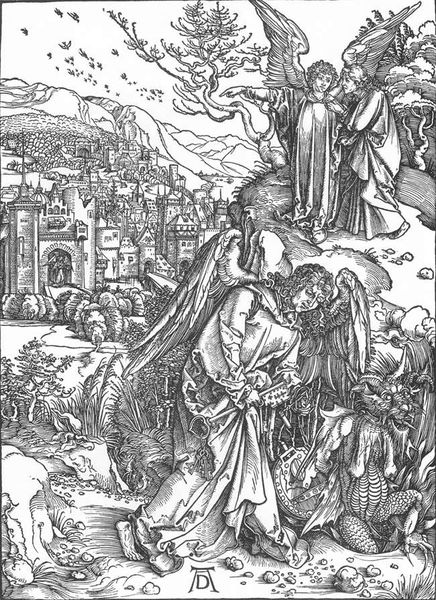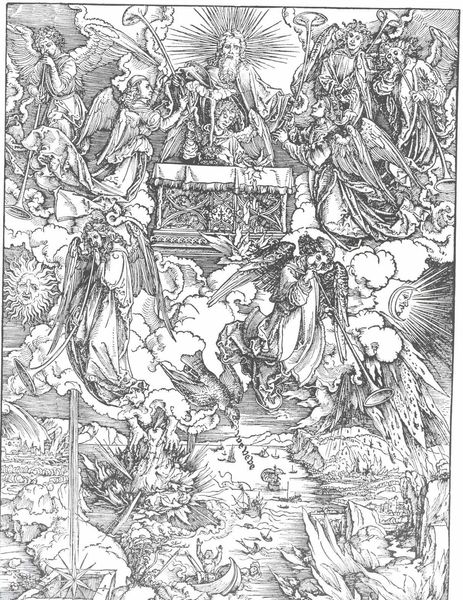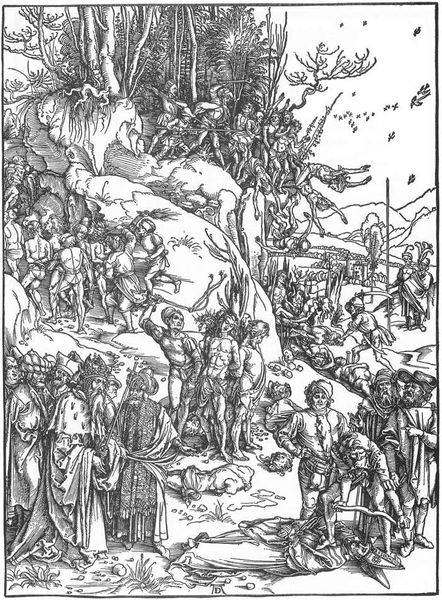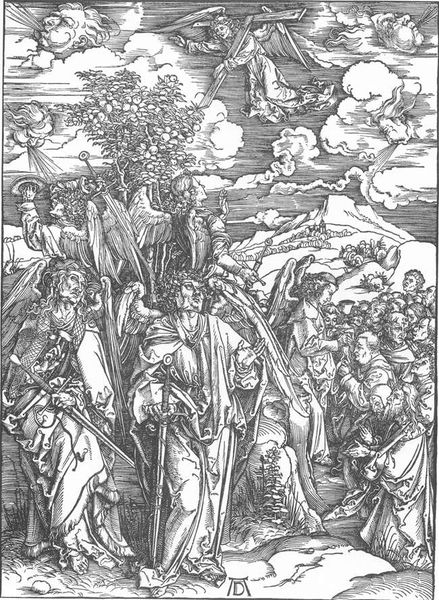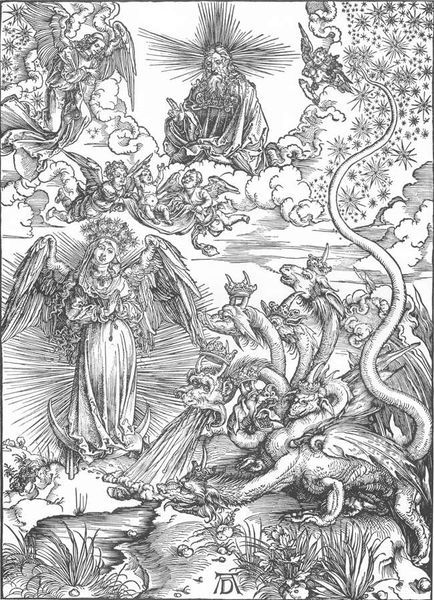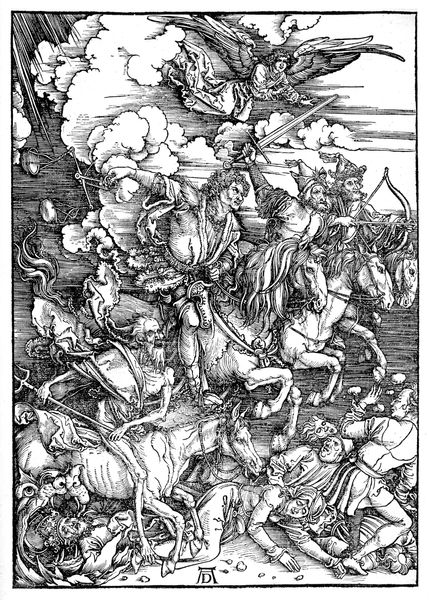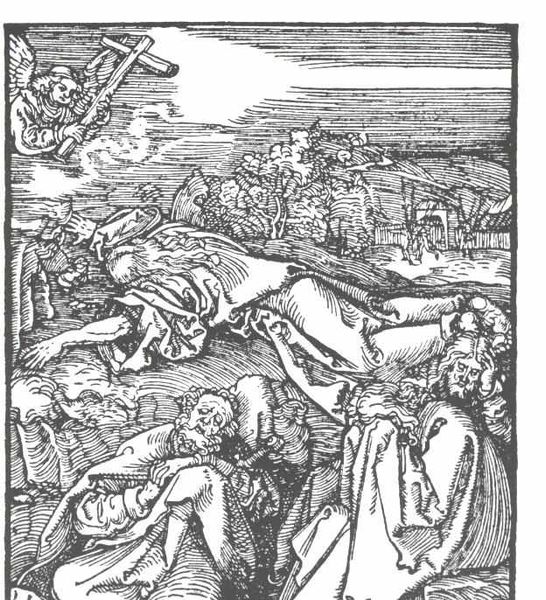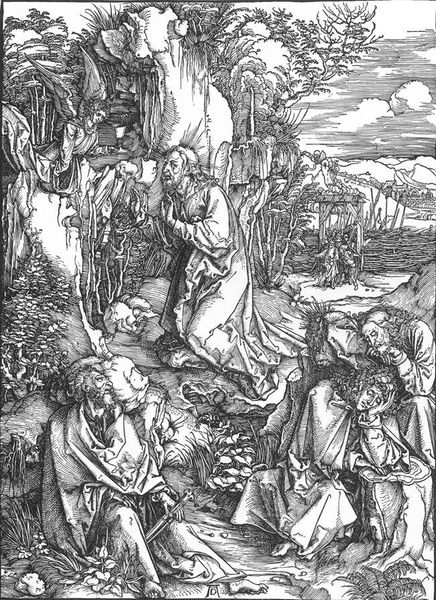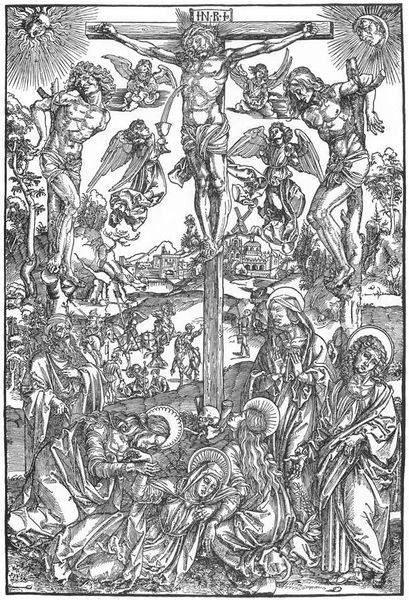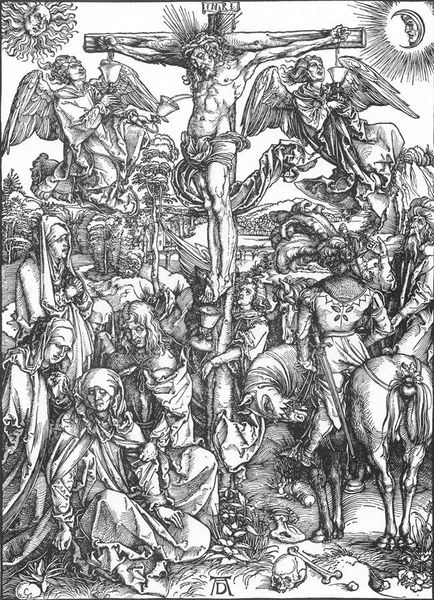
The Sea Monster and the Beast with the Lamb s Horn 1498
0:00
0:00
print, woodcut, engraving
#
narrative-art
# print
#
figuration
#
line art
#
woodcut
#
christianity
#
line
#
pen work
#
history-painting
#
northern-renaissance
#
engraving
Copyright: Public domain
Curator: This engraving, "The Sea Monster and the Beast with the Lamb's Horn," dates to 1498, a powerful image from the hand of Albrecht Durer. It’s housed here in the Staatliche Kunsthalle Karlsruhe. Editor: The density of the line work is astonishing. Look at how much information Durer packed into this small space. I find it quite unsettling; all that texture gives the impression of moral anxiety. Curator: Durer was fascinated by the symbolic potential of such composite creatures. In this print, adapted from the Book of Revelation, we see the monstrous figures symbolizing corruption and spiritual decay. He aimed to evoke powerful emotions through universally understood symbols. The seven-headed beast is iconic. Editor: Absolutely. Think about the political turmoil and religious reformations roiling Europe at the time. Images like these tapped directly into collective fears and desires. The sea monster feels very much like a symbol for tyrannical authority, ready to devour everything. Curator: Precisely. But look too at the Lamb with the Horn. That iconography relates back to ideas about spiritual authority and resistance, hope for justice amidst darkness. Even the arrangement suggests a sort of heavenly court. Editor: Is that divine power or rather earthly figures gazing upon a drama, unsure what their role might be? Are they complicit observers, trapped as subjects of power, or active participants with the agency to disrupt such systems of oppression? The ambiguity itself can be read as resistance. Curator: It reminds me of Byzantine images where hierarchies reflect both heavenly order and earthly authority. These composite images aren’t simple morality tales, I would argue, but rich expressions of conflict. It also speaks volumes about anxieties concerning faith and power. Editor: Durer definitely invites an ongoing dialogue about agency, doesn't he? By leaving the scene so heavily symbolic and charged, it inspires debate across generations facing similar struggles with authority. What is our own responsibility to combat such tyranny? Curator: It has truly revealed the lasting power of symbols, prompting viewers, then and now, to interrogate faith and to resist corruption through symbolic visual language. Editor: I think this has highlighted art’s capacity not merely to mirror the past, but actively fuel questions for the present, making it a dynamic force for us.
Comments
No comments
Be the first to comment and join the conversation on the ultimate creative platform.
